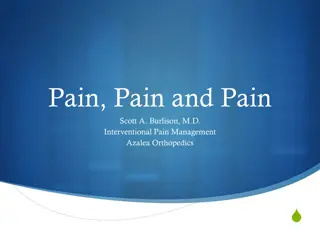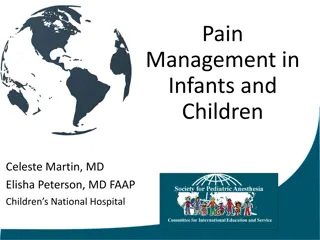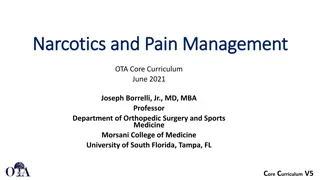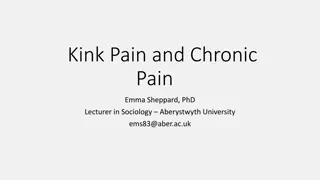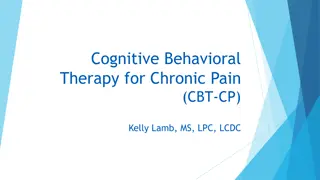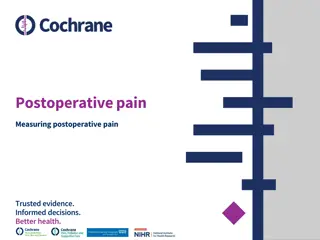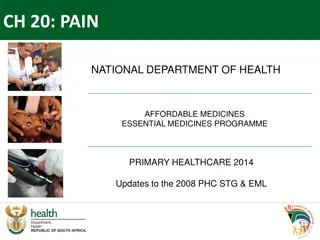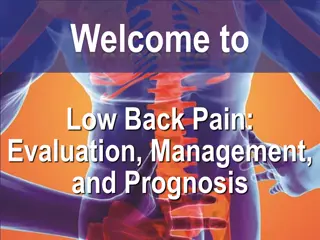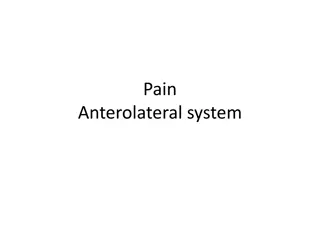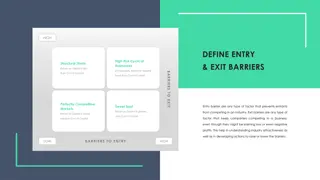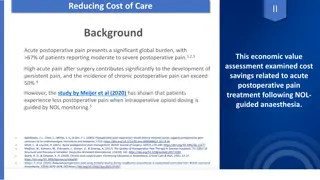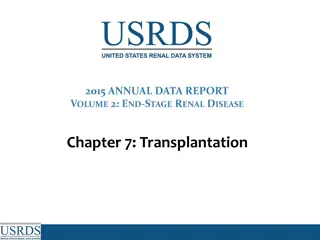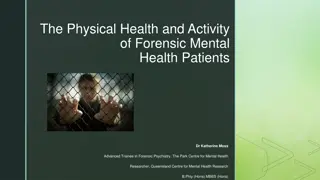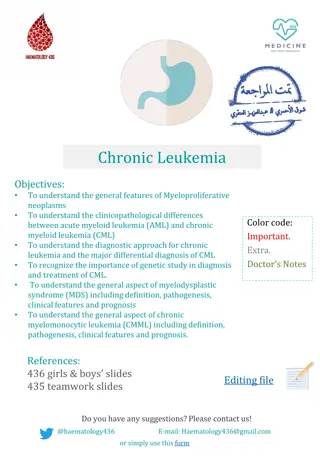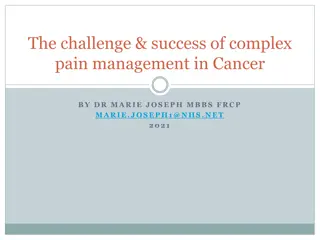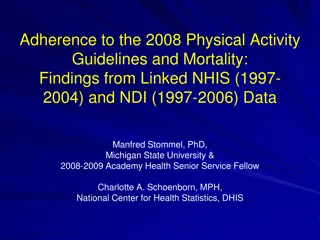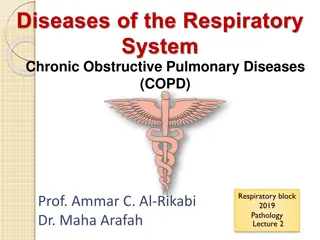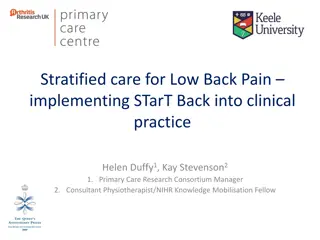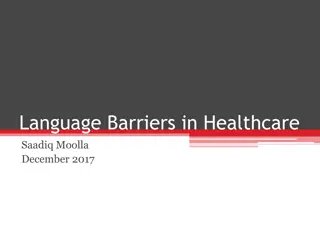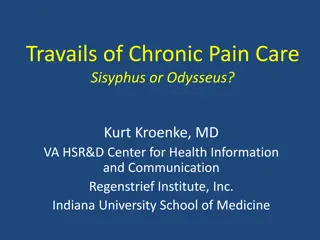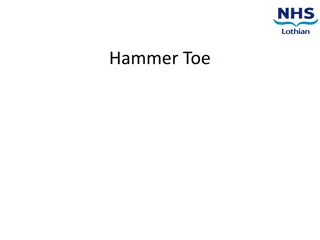Understanding Barriers to Physical Activity in Chronic Pain Patients
Chronic pain is a widespread issue affecting a significant portion of the UK population. This research aims to systematically review the barriers and facilitators to engaging in physical activity for adults with chronic pain. By categorizing and analyzing the factors using the COM-B model, the study seeks to shed light on how to improve adherence to exercise interventions for this population. The methodology involves searching various databases for relevant research and applying quality appraisal criteria to ensure robust findings.
Download Presentation

Please find below an Image/Link to download the presentation.
The content on the website is provided AS IS for your information and personal use only. It may not be sold, licensed, or shared on other websites without obtaining consent from the author. Download presentation by click this link. If you encounter any issues during the download, it is possible that the publisher has removed the file from their server.
E N D
Presentation Transcript
First in the UK for Medicine (The Guardians University Guide 2021) Barriers and facilitators for physical activity in people living with chronic pain: a systematic review and combined analysis. Callum Leese, Devashri Gupte, Cassie Higgins, Rebecca Skinner, Pauline Adair, Philippa Dall, Blair H. Smith, Lesley Colvin GPST3 SCREDS Lectureship Dundee, 27/10/23 dundee.ac.uk Page 1
Introduction Chronic pain represents a public health emergency, with 43% of the UK adults suffering from chronic pain Research has shown physical activity to be effective in the management of pain, with the mechanism of action likely multifactorial Globally only 17% of the adult population meet the WHO guidelines Physical inactivity is particularly pronounced in individuals who suffer with chronic pain A Cochrane review assessed interventions to improve adherence to exercises in individuals with chronic musculoskeletal pain, concluding that the reasons for adherence was complex and calling for further research. dundee.ac.uk Page
Aims 1. Systematically review the current evidence of barriers and facilitators to engagement in physical activity and exercise for adults with chronic pain 2. Categorize and analyse the barriers and facilitators using the COM-B model dundee.ac.uk Page
Methods PROSPERO registered (CRD42020219488) INCLUSION EXCLUSION Peer-reviewed primary research that explored barriers to, AND/OR facilitators of, physical activity in adults(age 18 or older) with chronic pain Review articles, opinion excerpts, protocols, conference abstracts Published in English Research with paediatric populations Published from inception of databases until 4th October 2022 Intervention not deemed to be PA (e.g. manipulation, mobilisation or passive movement) Failure to define chronic pain as pain that had lasted for 3 or more months on most days Exploration of sedentary behaviour without the specific inclusion of physical activity dundee.ac.uk Page
Methods Databases: PubMed, EMBASE, CINAHL, PsycINFO, Web of Science and Scopus Search terms consisted of three components: pain, physical activity, and facilitators and/or barriers Double-handed review as described by PRISMA guidelines Single-handed data extraction using a pre-designed extraction template file Quality appraisal via CASP checklist or MMAT V. 2018 dundee.ac.uk Page
Methods Qualitative analysis was performed by a single author After coding themes were identified which were classified into the 6 sub- components of the COM-B model. dundee.ac.uk Page
dundee.ac.uk Page
Results 2 37 studies were included Of these; 29 were qualitative, 5 were quantitative observational surveys and the remaining 3 were mixed-method studies The total number of participants across the 37 included studies was 2116 Range of different chronic conditions Study quality was mixed dundee.ac.uk Page
Results: Barriers dundee.ac.uk Page
Results: Facilitators dundee.ac.uk Page
Key Outputs Main Barriers Key Facilitators Higher pain severity Person-centred PA delivery Presence of comorbidities Good social support Lack of knowledge Education regarding benefits of PA Time Constraints Addressing these barriers and leveraging facilitators is crucial for successful future interventions, addressing gaps highlighted in the Cochrane Review dundee.ac.uk Page
References dundee.ac.uk Page
First in the UK for Medicine (The Guardians University Guide 2021) Dr Callum Leese dundee.ac.uk Page 13




